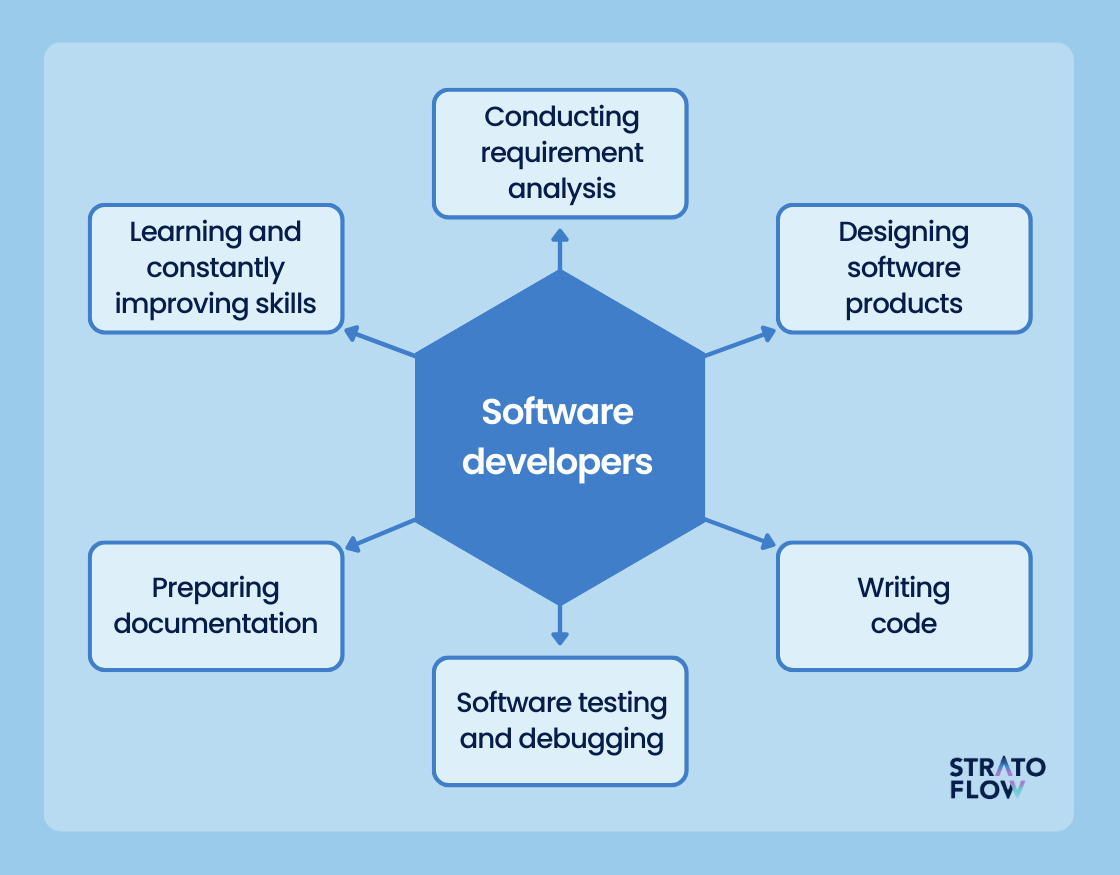Optimize Your Resources with Specialist Software Engineering Staffing Solutions
Optimize Your Resources with Specialist Software Engineering Staffing Solutions
Blog Article
Devoted Developers vs. In-House Teams: Which Is Right for You?
The decision between using committed designers and preserving an internal team is a considerable one that can affect the trajectory of your projects and total business approach. Dedicated programmers give a level of flexibility and specialized knowledge that can be helpful for certain, temporary campaigns. Alternatively, internal teams add to a natural company culture and a nuanced understanding of long-lasting objectives. By taking a look at critical factors such as spending plan, job range, and preferred control, you can better determine which technique straightens with your organizational needs. However, the ramifications of this selection extend past instant results-- take into consideration the more comprehensive influence on your service landscape.
Recognizing Dedicated Designers
The expanding need for specialized skills in the tech industry has caused the emergence of specialized designers as a feasible option for lots of companies. These specialists are commonly contracted on a task basis, permitting companies to leverage particular experience without the long-term commitment associated with full-time hires. Committed designers are often embedded within a client's team, supplying versatility and scalability to fulfill project needs.
This design enables organizations to access a worldwide talent pool, which is especially helpful in a rapidly evolving technological landscape. Devoted designers can be sourced from different geographical locations, ensuring that companies can discover the appropriate ability set at competitive rates. They commonly bring a riches of experience and understanding, having actually worked with diverse projects across different sectors.
In addition, devoted programmers can concentrate exclusively on the jobs handy, boosting efficiency and performance. They are furnished to integrate seamlessly right into existing operations, collaborating very closely with in-house teams to attain job purposes. This method not only lowers the burden of employment and training however additionally enables companies to stay dexterous, adapting promptly to altering market needs and technological advancements.
Benefits of In-House Teams

Furthermore, in-house teams have a tendency to have a much deeper understanding of the company's mission, worths, and goals. This placement can improve employee interaction and inspiration, as employee really feel a lot more connected to their job and the organization's success. Furthermore, having a committed internal team permits better positioning of strategies and goals, as these participants are consistently concentrated on the business's concerns.
In-house groups likewise help with quicker decision-making procedures, as they can react more swiftly to adjustments and obstacles. The established relationships and familiarity with firm procedures enable for structured workflows and lowered miscommunication. Eventually, the mix of a cohesive society, placement with organizational goals, and efficient interaction makes in-house groups a valuable asset for numerous organizations, specifically those seeking to grow long-term growth and advancement.
Expense Considerations
When examining expense factors to consider, both internal groups and specialized designers present distinctive monetary ramifications for organizations. Involving committed programmers usually includes a pay-per-project or per hour rate version, which can be cost-efficient for companies with rising and fall task demands. This strategy permits for flexibility in scaling sources up or down, making certain that business only pay for the solutions they need.
In comparison, internal groups involve dealt with expenses, including incomes, benefits, and overhead expenditures such as office and equipment. While this model offers higher control and immediate accessibility of sources, it may bring about greater lasting expenditures, particularly if the work does not justify a full time personnel.
Furthermore, companies should take into consideration the surprise prices connected with employment and training of in-house staff members, which can better strain budget plans. Sometimes, the time and resources spent on taking care of an internal group can diminish the organization's core organization goals.

Project Monitoring and Flexibility
Job management and adaptability are important factors that influence the choice in between devoted programmers and internal teams. Dedicated teams frequently have developed processes for managing projects properly, leveraging details methods like Agile or Scrum, which promote iterative progression and flexibility.

Inevitably, the choice in between committed programmers and in-house teams depends upon the wanted level of adaptability and the certain job administration requirements. Firms must review their operational characteristics, job intricacy, and resource availability to establish which alternative aligns ideal with their tactical objectives.
Making the Right Selection
Picking the best growth technique-- internal groups or committed developers-- requires a mindful analysis of different factors that straighten with a company's tactical objectives. offshore software development. Consider the nature of the task. If it requires specialized skills or a fast scale-up, committed developers may be better. Alternatively, internal groups can supply better continuity go now and combination with existing personnel.
Following, evaluate your spending plan. Committed designers often present a cost-effective remedy for temporary projects, while in-house groups might sustain greater long-term expenses due to salaries, advantages, and expenses expenses. Evaluate the degree of control and collaboration preferred; internal groups usually cultivate more powerful communication and positioning with firm culture.
If prompt outcomes are required, committed programmers can be onboarded rapidly, whereas constructing an internal team takes time for recruitment and training. If continual advancement is crucial, investing in an internal team may generate far better returns over time.
Conclusion
In conclusion, the decision between committed developers and internal teams hinges on task needs and organizational objectives. Alternatively, in-house teams cultivate a cohesive culture and deeper placement with lasting goals.
The decision between utilizing committed developers and preserving an in-house team is a significant one that can influence the trajectory of your projects and general business technique.Project management and adaptability are crucial factors that affect the selection in between committed designers and in-house teams. software development staff augmentation.In contrast, in-house groups might excel in maintaining a regular task monitoring structure due to their familiarity with the company's culture and lasting objectives. Dedicated developers typically offer an affordable solution for temporary projects, while in-house teams may sustain greater lasting expenditures due to salaries, advantages, and overhead expenses.In final thought, the choice in between devoted developers and internal website companies near me teams pivots on job demands and business purposes
Report this page